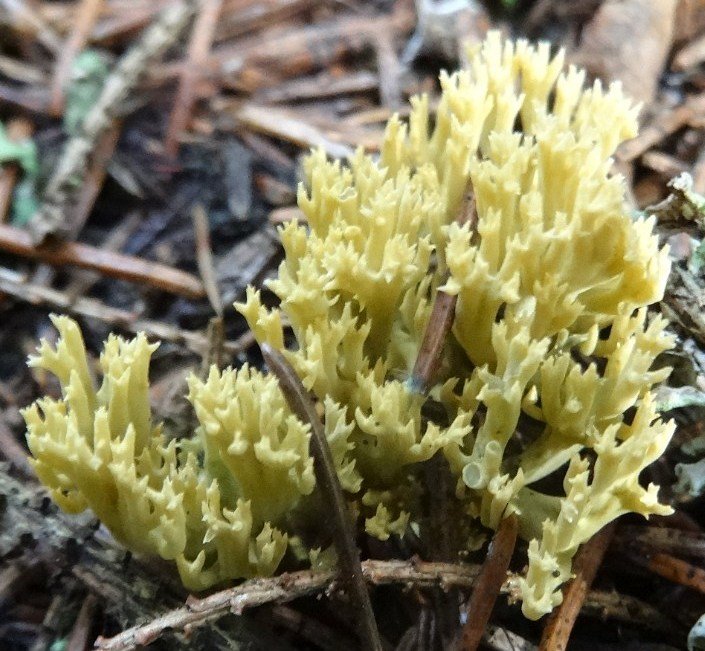Feoclavulina fir (Phaeoclavulina abietina)
- Diviziune: Basidiomycota (Basidiomycetes)
- Subdiviziunea: Agaricomycotina (Agaricomycetes)
- Clasa: Agaricomycetes (Agaricomycetes)
- Subclasa: Phallomycetidae (Velkovye)
- Comanda: Gomphales
- Familia: Gomphaceae (Gomphaceae)
- Genus: Phaeoclavulina (Feoclavulina)
- Tip: Phaeoclavulina abietina (Feoclavulina fir)
:
- fir ramaria
- Fir hornet
- Corn de molid
- spruce ramaria
- Pinul
- Merisma fir trees
- Hydnum fir
- Ramaria abietina
- Clavariella abietina
- Clavaria ochraceovirens
- Clavaria virescens
- Ramaria virescens
- Ramaria ochrochlora
- Ramaria ochraceovirens var. parvispora

As is often the case with mushrooms, Phaeoclavulina abietina “walked” from generation to generation several times.
This species was first described by Christian Hendrik Persoon in 1794 as Clavaria abietina. Quele (Lucien Quélet) transferred him to the genus Ramaria in 1898.
Molecular analysis in the early 2000s showed that, in fact, the genus Ramaria is polyphyletic (Polyphyletic in biological taxonomy is a group in relation to which a closer relationship of its constituent subgroups with other groups that are not included in this one is considered proven).
In English-speaking countries, Horned Spruce is known as “green-staining” coral” – “greenish coral”. In the Nahuatl language (Aztec group) it is called “xelhuas del veneno”, which means “poisonous broom”.
Fruit bodies coral. Bunches of “corals” are small, 2-5 cm high and 1-3 cm wide, well branched. Individual branches are erect, sometimes slightly flattened. Near the very top they are bifurcated or decorated with a kind of “tuft”.
The stem is short, the color is green to light olive. You can clearly see the matte whitish mycelium and rhizomorphs going into the substrate.
Fruit body color in green-yellow tones: olive-ocher to dull ocher top, color described as “old gold”, “yellow ocher” or sometimes olive (“deep greenish olive”, “olive lake”, “brownish olive” , “olive”, “sharp citrine”). Upon exposure (pressure, fracture) or after collection (when stored in a closed bag), it quickly acquires a dark blue-green color (“bottle glass green”), usually from the base gradually to the tops, but always first at the point of impact.
Pulpă dense, leathery, the same color as the surface. When dry, it is brittle.
Miros: faint, described as the smell of damp earth.
Gust: soft, sweetish, with a bitter aftertaste.
pulbere de spori: dark orange.
End of summer – late autumn, depending on the region, from mid-late August to October-November.
Grows on coniferous litter, on the soil. It is quite rare, in coniferous forests throughout the temperate zone of the Northern Hemisphere. Forms mycorrhiza with pine.
Inedible. But some sources indicate the mushroom as “conditionally edible”, of poor quality, preliminary boiling is required. Obviously, the edibility of Feoclavulina fir depends on how strongly the bitter aftertaste is. Perhaps the presence of bitterness depends on the growing conditions. There are no exact data.
Common ramaria (Ramaria Invalii) may look similar, but its flesh does not change color when injured.
The name “Spruce Hornbill (Ramaria abietina)” is indicated as a synonym for both Phaeoclavulina abietina and Ramaria Invalii, in this case they are homonyms, and not the same species.
Foto: Boris Melikyan (Fungarium.INFO)









